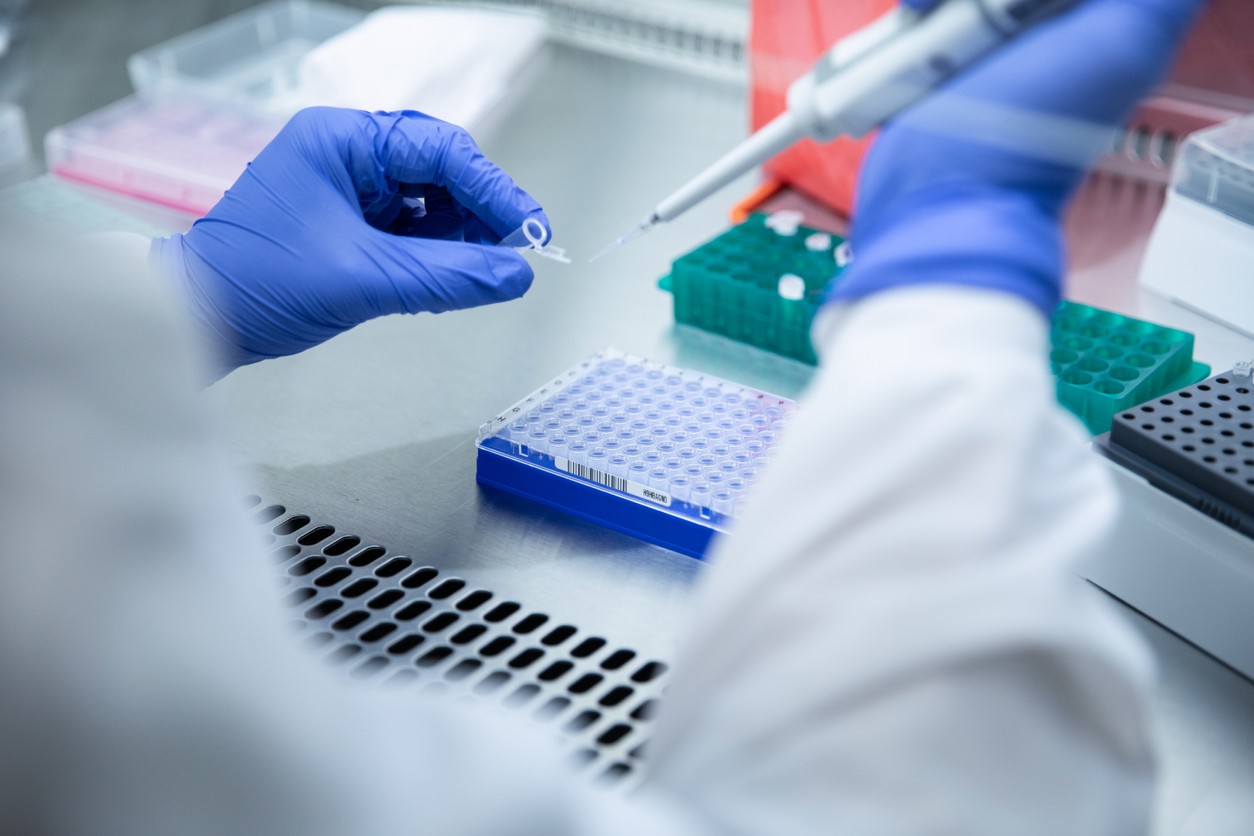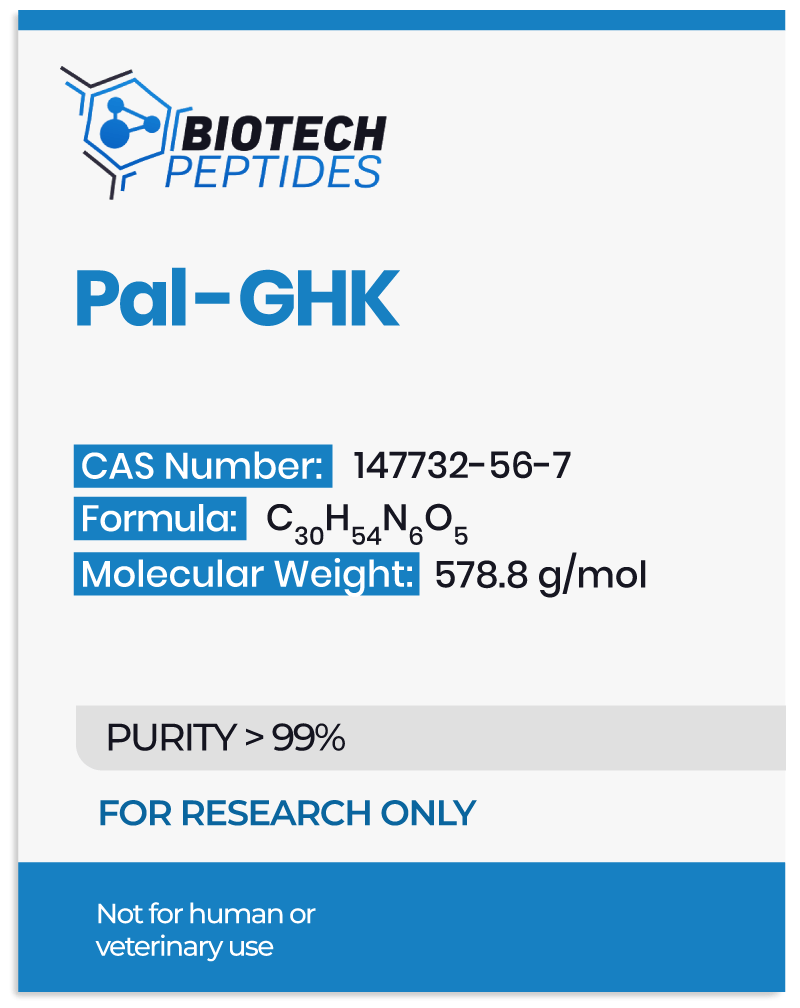Potential Function of Pal-GHK Peptide
Palmitoyl Tripeptide-1 may induce the production of fibroblasts at a rapid rate to replenish and regenerate any lost elastin. The GHK-end is connected to the Pal-end, the fatty acid (Palmitoyl) end of Pal-GHK acts as an intermediary. This transport complex appears to improve skin cell penetration.
Pal-GHK peptide appears to activate genes that may change and reset cells. This may be accomplished by attaching Palmitoyl to the peptide sequence, GHK, which may make it more effective for DNA repair genes and increases the expression of the 14 genes that modulate antioxidant production. Following the genetic changes, the action of cell aging may be reduced, as are radicals and toxic agents that cause the development of certain diseases.
Pal-GHK is a modified form of the extracellular matrix-derived peptide GHK that may potentially permeate the stratum corneum and attain the epidermal and dermal skin layers.
Pal-GHK (0.5 M) may increaase collagen synthesis in skin fibroblasts. It may reduce collagen degradation in skin samples exposed to UVA light when examined at a concentration of 6 ppm.
Scientists suggest that combined with the zwitterionic surfactant C12 dodecyl dimethylamine oxide they may investigate the composite’s identity into aggregates, ribbons, and nanobelts. Pal-GHK peptide as an internal standard helped quantify pal-KTTKS in anti-wrinkle creams using LC-MS/MS.
Scientists believe Pal-GHK peptide may activate age-related DNA repair and certain genes. According to new research, the peptide may potentially influence follicle regeneration.
Pal-GHK Peptide and Wrinkles
Pal-GHK may protect the extracellular matrix from certain cell aging consequences, according to scientific data[4]. Shagen et al report that “In a study … leading to statistically significant reductions in wrinkle length, depth and skin roughness. Another study applied both vehicle and palmitoyl tripeptide-1 to the skin … documenting a small but statistically significant increase in skin thickness (~4%, compared to the vehicle alone)The peptide accomplishes this by increasing the production of elastin and collagen.”
Palmitoyl Tripeptide-1 may replenish the skin’s extracellular matrix, reducing wrinkles, smoother skin, and less uneven skin. At the same time, it may protect collagen from degradation caused by Ultraviolet A (UVA) rays. Pal-GHK peptide may be examined solely or combinatorally with Palmitoyl tetrapeptide – Z.
Disclaimer: The products mentioned are not intended for human or animal consumption. Research chemicals are intended solely for laboratory experimentation and/or in-vitro testing. Bodily introduction of any sort is strictly prohibited by law. All purchases are limited to licensed researchers and/or qualified professionals. All information shared in this article is for educational purposes only.
References
- Ferreira, M. S., Magalhães, M. C., Sousa-Lobo, J. M., & Almeida, I. F. (2020). Trending anti-aging peptides. Cosmetics, 7(4), 91.
- Gorouhi, F., & Maibach, H. I. (2009). Role of peptides in preventing or treating aged skin. International journal of cosmetic science, 31(5), 327-345.
- Park, S. I., An, G. M., Kim, M. G., Heo, S. H., & Shin, M. S. (2020). Enhancement of Skin Permeation of Anti-wrinkle Peptide GHKs Using Cell Penetrating Peptides. Korean Chemical Engineering Research, 58(1), 29-35. https://doi.org/10.9713/KCER.2020.58.1.29







